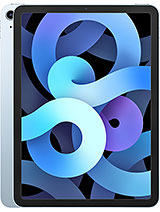iPad Air (2020) Teardown: Long Live Touch ID By iFixit
We finally made it through the bulk of teardown season, but it looks like something slipped through the cracks. Oh, here it is its that new iPad Air. It's been redesigned to look more like an iPad Pro with flat edges and smaller bezels, but the bezels aren't quite as thin as the 11-inch iPad Pro. It's the thought that counts, though, on the back side you can see. Things are mostly the same, but instead of the iPad Pro's massive dual camera and LIDAR bump, the air only has one tiny camera poking out. The iPad Air comes in bright, new colors, like sky, blue and green, and has apple's latest a14 processor inside speaking of inside.
Let's see what else is inside this thing to open it up, we apply some heat with an eye-opener and use an is clack to create a gap between the display and the aluminum body then slide an opening pick inside next. Some very careful frying gets us past the rest of the adhesive, and we get our first look inside the iPad Air. Before we can look too closely at the new guts, we've got to get the screen out of the way some Phillips screws and two brackets hide the three cables connecting the display to the logic board. Once those are dealt with, the display is free inside the new iPad Air you'll see a few notable changes. The first is the logic board now lives on the right edge of the iPad.
Usually we see pro iPad logic boards centered inside the device surrounded by a battery cell on either side. You will also notice there are only two speakers instead of the pros4, but we have the same magnet configuration. So this will work. The existing 11-inch iPad Pro cases and keyboards. The rear camera hardware lives up here in the upper corner, underneath the touch ID hardware and since we have touch ID instead of face ID there's just a single 7, megapixel FaceTime camera for video calls and selfies.
Finally, toward the bottom of the iPad. There's a sim reader in the cellular versions like ours and unfortunately, it looks like apple, hasn't, changed the way they connect iPad batteries to logic boards. This is the same annoying contact hardware from past iPads, basically to disconnect the battery and kill power to the board. You'll have to insert something like our battery blocker between the board and the battery contact tabs underneath, since a lot of this is looking familiar, let's head right to the interesting step, the touch I'd corner. First, we get the 12 megapixel rear camera sensor out of the way, then it's a whirlwind of screws to remove and cables to disconnect.
After some generous heat, the fingerprint sensor, cable comes up. Some more generous heat allows us to move the button's bracket and push the button out through the top of the iPad apple's VP of marketing mentioned in a podcast that this button was an incredible feat of engineering. We've seen other power buttons with fingerprint sensors in them before, so it doesn't seem that impressive, but apparently it was tricky to ensure the antennas in the cellular model and this button didn't interfere with each other. This whole corner of the iPad Air is jam-packed with hardware, so that one we believe we are particularly curious about whether they plan for this button to be replaced. The heat we used to remove the button softened this plastic bracket until it was malleable enough to be moved out of the way, it's possible that the bracket is some kind of thermoformed plastic, and this is what they intended, but we're not really sure back on the disassembly train.
We start to disconnect cables and components on our way to the logic board. First is the seven megapixel FaceTime camera, followed by several antenna cables, the Apple Pencil wireless charging pad the sim reader and the USB-C port after everything is disconnected heat and alcohol help us peel up the board, which, like everything else in here, is glued to the aluminum chassis. Some behind the scenes soldering gets us past the shields, hiding the logic board chips. So we can see the silicon underneath first on our radar is the Apple A14 chip, bundled here with four gigabytes of ram right above that is 64 gigabytes of Peoria flash storage. We are done fighting adhesive for the day, so we're not going to pull out this iPad battery, but we can zoom in on it, for you powering the 2020 iPad Air is a pair of lithium-ion cells, totaling 28.9 watt hours, that's just barely smaller than the 29.4 watt hour battery in the 11-inch iPad Pro. Well, that's it for disassembly.
Let's give this thing a score. The 2020 iPad Air scores a 2 out of 10 on our repairability scale. While it does only have Phillips screws and some components are modular, pretty much everything is glued in place. So, no matter what repair you attempt to prepare to battle some serious adhesive, we were excited to see that touch ID sensor, and we are always hopeful that apple will bring their design for repairability skills to the iPad game. Unfortunately, that wasn't the case today.
You.
Source : iFixit



























